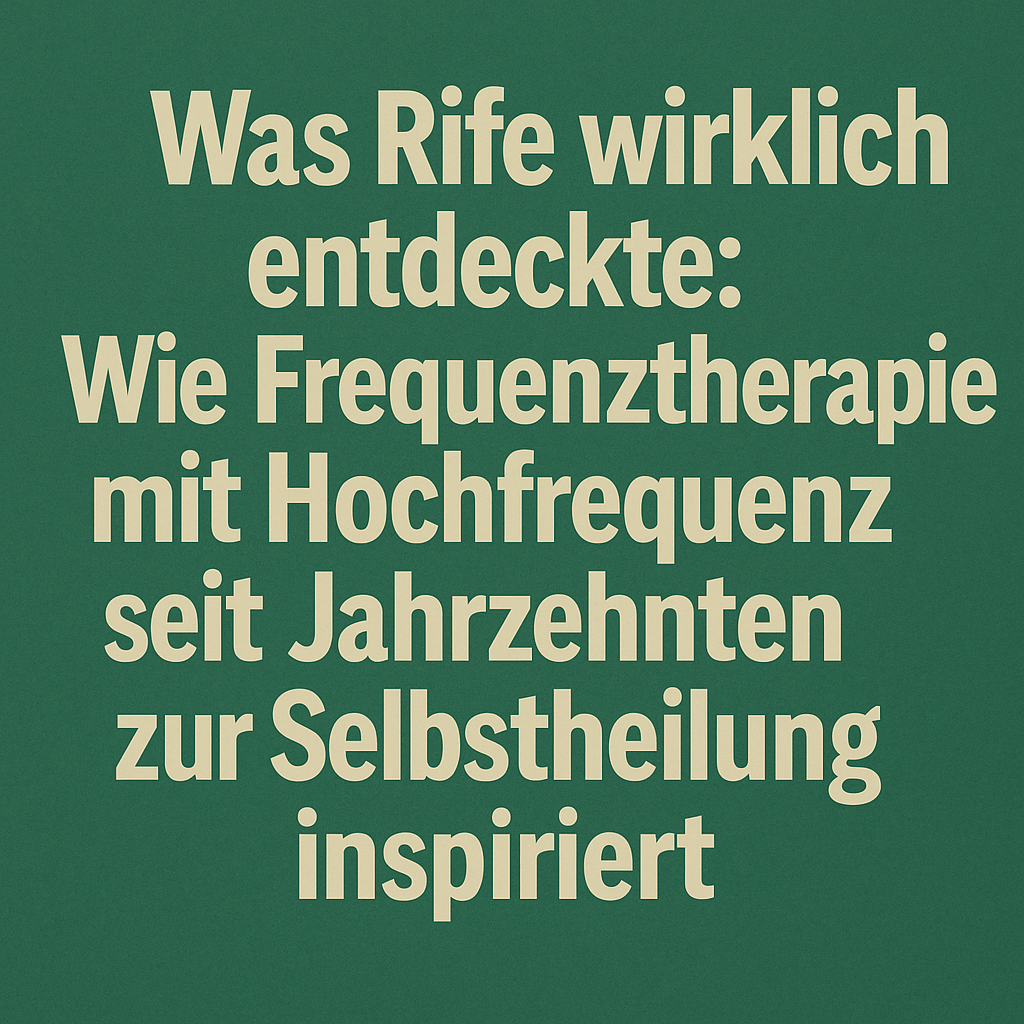
Dr Rife's true frequencies - The forgotten potential of radiofrequency therapy
Introduction: Frequency therapy beyond the myths
In the world of frequency therapy, hardly any name is as legendary as that of Dr Royal Raymond Rife. In the 1930s, he developed a therapy method that was intended to destroy microorganisms using electromagnetic frequencies. But what is the truth behind these historical approaches? And which frequencies did Rife actually use?
The original frequencies: not audio pulses, but high-frequency radiation
Contrary to what many modern interpretations claim, Rife did not use low-frequency audio frequencies for therapy. Instead, he worked with high-frequency electromagnetic waves in the range from 139,200 Hz to 1,607,450 Hz. These frequencies, also known as M.O.R. (Mortal Oscillatory Rates), were intended to "devitalise" microorganisms, i.e. render them harmless.
The role of Philip Hoyland: Ingenious engineer and hidden technology
From 1936, Rife's partner Philip Hoyland developed the technical concepts to make this complex modulation possible. His "Low Q" circuit combined a carrier frequency with audio frequencies in such a way that the target MORs lay exactly in the "window of vulnerability" of the pathogens via harmonic sidebands.
The big mistake: Why modern "Rife devices" often don't work
In the 1950s, a serious misunderstanding occurred: Rife's employees John Crane and John Marsh tried to rebuild the devices - but they did not understand Hoyland's modulation principle. Instead, they used low audio frequencies (e.g. 728 Hz, 880 Hz) directly as therapy signals. The result: devices such as the "AZ-58" no longer produced effective sidebands. Clinical tests confirmed: No effect against bacterial cultures.
Harmonic frequency multiplication: the key to the effect
Rife recognised that the effective frequencies could be harmonic multiples of his original values. For example, Hoyland used:
- BX cancer virus: 1,607,450 Hz × 2=3 ,214,900 Hz
- E. coli: 416,510 Hz × 8=3 ,332,080 Hz
- Pneumonia: 426,862 Hz × 8=3 ,414,900 Hz
These modulations only worked if the exact audio frequencies were transmitted in combination with a high-frequency carrier.
What does this mean for today's users?
Anyone using devices today that only work with simple audio frequencies is not utilising the potential of the original method. Only generators that can produce high-frequency sidebands accurately come close to the original principle. Modern frequency therapy according to Rife requires technical understanding and genuine high-frequency technology.
Conclusion: On the trail of a lost science
Dr Rife's work was far ahead of its time. However, technical complexity, lack of patent protection and subsequent errors led to his method being forgotten. Today there is an opportunity to re-evaluate the original knowledge - not as a miracle cure, but as the basis of a precise, frequency-based form of therapy.
